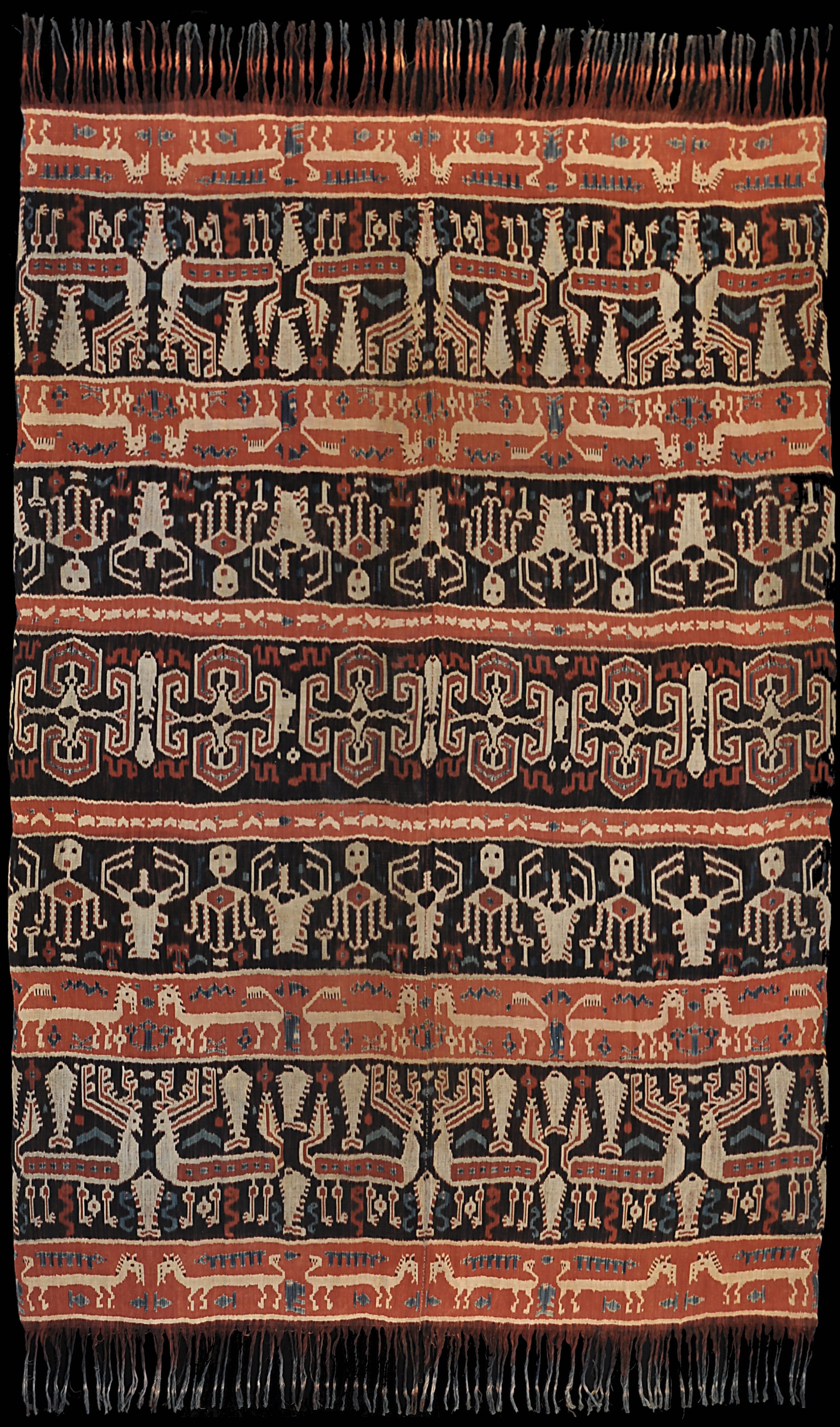| |
 mouse over to magnify mouse over to magnify
| | | | 188 Sumba, East Sumba
Hinggi (men's blanket)
| | Locale: | Kanatang, probably. | | Period: | 1930s | | Panels: | 2 | | Design: | Eleven patterned areas. The central one is decorated with the habak motif reserved for Kanatang royalty. The other motifs are also the prerogative of the nobility: stags and horses which stand for wealth, aquatic animals (lobsters, octopuses and fishes which stand for the ability to communicate with other realms than the earthly), snakes, and keys. The latter are rarely seen in Sumba textiles and presumably are symbols of power, as only few classes would have locks or valuables worth locking up for that matter. | | Size: | 168 x 260 cm (66.1 x 102.3 in) | | Weight: | 1100 g (252 g/m2) | | Yarn: | Cotton, hand-spun, fine, double-ply | | Comment: | A powerful hinggi made for royalty. Striking is the lack of clutter, which, along with the saturated colours, gives the cloth a strongly stylised and powerful aspect. An early piece in perfect state of preservation. The octopus motif, like the keys, are rarely seen in Sumbanese textiles. The yarn was expected to be factory made, albeit somewhat slobby, indicating likely local (e.g. Sumatran or Javan) manufacture, but microscopy shows thread of such uneven thickness that it must be hand spun or wheel spun. From old Dutch collection. | | Background: | Additional information in chapters on Sumba and East Sumba. | | Published: | Ikat Textiles of the Indonesian Archipelago, 2018.
Ikat from Timor and its Outer Islands, 2022. | | Compare: | 187 027 299 319 | | Sources: | Very similar to hinggi from around 1920 in Khan Majlis, Woven Mesages, which likewise has eleven patterned areas, paired stags in the wide bands close to the extremities, and habbak motifs in the central field. The treatment of the deer is also practically identical. Treatment of the deer also similar to those on early 20th C. hinggi depicted in Reedijk c.s., Decorative Arts of Sumba, p. 93. Overall appearance similar to hinggi with stags in Gillow, Traditional Indonesian Textiles, Fig. 7 but with habak insteak of patola ratu in the kundu dukuh, midfield, and finer drawing of the deer. | | |
 ©Peter ten Hoopen, 2025
All rights reserved.
|
|


